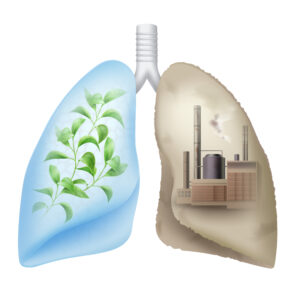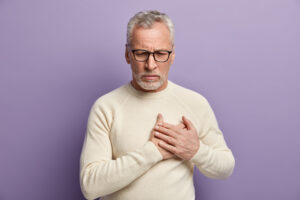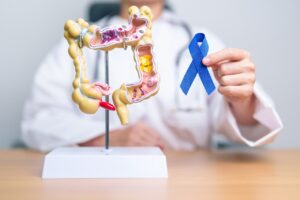Air pollution is a silent killer, gradually eroding our health and increasing the risk of various diseases, particularly lung cancer. This insidious threat is a growing concern worldwide, demanding immediate attention and proactive measures.
Understanding The Link Between Air Pollution And Lung Cancer
Lung cancer, a leading cause of cancer-related deaths globally, arises primarily from uncontrolled cell growth in the lungs. While smoking remains the most significant risk factor, air pollution plays a crucial role in exacerbating this risk.

Here’s how pollution contributes to lung cancer development:
- Inhalation of Toxic Particles: Air pollutants, such as particulate matter (PM2.5 and PM10), nitrogen dioxide (NO2), sulfur dioxide (SO2), and ozone (O3), are tiny particles that can penetrate deep into the lungs. These particles can trigger inflammation, oxidative stress, and DNA damage in lung cells.
- Chronic Inflammation: Prolonged exposure to air pollution leads to chronic inflammation in the lungs. This persistent inflammation can damage lung tissue and create an environment conducive to the development of cancer.
- Weakened Immune System: Air pollution can weaken the immune system, making it less effective in fighting off cancer cells.
Types of Pollution and Their Impact
- Outdoor Air Pollution:
- Vehicle emissions: Exhaust fumes from cars, trucks, and buses release harmful pollutants like nitrogen oxides and particulate matter.
- Industrial emissions: Factories and power plants release a range of pollutants, including sulfur dioxide, heavy metals, and volatile organic compounds (VOCs).
- Wildfires: Smoke from wildfires contains fine particulate matter and other harmful chemicals.
- Indoor Air Pollution:
- Smoking: Secondhand smoke is a major indoor air pollutant, significantly increasing the risk of lung cancer.
- Cooking fumes: Burning fuels like wood, coal, and kerosene for cooking releases harmful pollutants.
- Household chemicals: Cleaning products, paints, and pesticides can release VOCs into the air.
High-Risk Groups
- Smokers: Smokers are at an even higher risk of lung cancer when exposed to air pollution.
- People with Pre-existing Lung Conditions: Individuals with asthma, chronic obstructive pulmonary disease (COPD), and other lung diseases are more susceptible to the harmful effects of air pollution.
- Children: Children are particularly vulnerable to the effects of air pollution due to their developing lungs and higher respiratory rates.
- Elderly: The elderly may have weakened immune systems and pre-existing health conditions, making them more susceptible to the effects of air pollution.
Symptoms of Lung Cancer:

Early detection is crucial for successful lung cancer treatment. Some common symptoms of lung cancer include:
- Persistent cough: A cough that doesn’t go away or worsens over time.
- Chest pain: Pain or discomfort in the chest that may worsen with deep breaths or coughing.
- Shortness of breath: Difficulty breathing, even during mild exertion.
- Wheezing: A whistling sound when breathing.
- Hoarseness: Changes in voice or difficulty speaking.
- Blood in sputum: Coughing up blood or blood-streaked mucus.
- Fatigue: Feeling unusually tired or weak.
- Loss of appetite: Loss of interest in food or unintentional weight loss.
Prevention and Mitigation Strategies
- Reduce Exposure:
- Limit exposure to outdoor air pollution: Avoid areas with heavy traffic, industrial zones, and construction sites.
- Improve indoor air quality: Ventilate your home regularly, use air purifiers, and avoid smoking indoors.
- Choose cleaner transportation options: Walk, cycle, or use public transport instead of driving.
- Strengthen Regulations:
- Implement stricter emission standards for vehicles and industries.
- Promote the use of renewable energy sources.
- Invest in air quality monitoring and improvement initiatives.
- Lifestyle Changes:
- Quit smoking: Smoking cessation is the most effective way to reduce the risk of lung cancer.
- Maintain a healthy diet: Include plenty of fruits, vegetables, and whole grains in your diet.
- Regular exercise: Engage in regular physical activity to improve lung function.
Conclusion:
Air pollution poses a significant threat to public health, contributing to the development of lung cancer and other respiratory diseases. By understanding the risks, taking preventive measures, and advocating for stronger regulations, we can protect ourselves and our communities from the harmful effects of air pollution.




